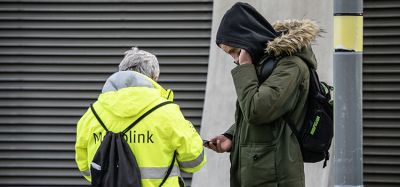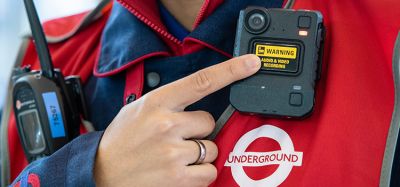Safe guarding the public with surveillance systems
- Like
- Digg
- Del
- Tumblr
- VKontakte
- Buffer
- Love This
- Odnoklassniki
- Meneame
- Blogger
- Amazon
- Yahoo Mail
- Gmail
- AOL
- Newsvine
- HackerNews
- Evernote
- MySpace
- Mail.ru
- Viadeo
- Line
- Comments
- Yummly
- SMS
- Viber
- Telegram
- Subscribe
- Skype
- Facebook Messenger
- Kakao
- LiveJournal
- Yammer
- Edgar
- Fintel
- Mix
- Instapaper
- Copy Link
Posted: 15 February 2008 | Henrik Virro, Project Manager for CCTV & Security, SL | No comments yet
Everyday more than 700,000 people travel with SL – Stockholm’s public transportation company. SL is the head principal for land-based public transportation (commuter trains, light rail, buses and metro) within the Stockholm region.
This means that SL doesn’t operate any trains or buses themselves, instead they engage transportation companies such as Veolia, Swebus and Busslink (among others) to operate the actual traffic. SL has approximately 500 employees but the SL traffic involves more than 10,000 persons, the major part employed through the transportation companies.
Everyday more than 700,000 people travel with SL – Stockholm's public transportation company. SL is the head principal for land-based public transportation (commuter trains, light rail, buses and metro) within the Stockholm region. This means that SL doesn't operate any trains or buses themselves, instead they engage transportation companies such as Veolia, Swebus and Busslink (among others) to operate the actual traffic. SL has approximately 500 employees but the SL traffic involves more than 10,000 persons, the major part employed through the transportation companies.
Everyday more than 700,000 people travel with SL – Stockholm’s public transportation company. SL is the head principal for land-based public transportation (commuter trains, light rail, buses and metro) within the Stockholm region.
This means that SL doesn’t operate any trains or buses themselves, instead they engage transportation companies such as Veolia, Swebus and Busslink (among others) to operate the actual traffic. SL has approximately 500 employees but the SL traffic involves more than 10,000 persons, the major part employed through the transportation companies.
The history and how it began
SL installed their first camera surveillance system during the 1960s and 1970s. It was a centrally monitored system, where the train control centre together with the police could monitor a number of metro stations. During the years the functionality and the availability of the system was reduced and as a result the system was withdrawn from production during the 1980s.
During the following years, SL installed a number of camera surveillance systems, mainly at the depots and in some metro stations. When SL ordered a new metro train, the decision was to equip it with black and white cameras directly from the manufacturer. Since 1998, all new metro trains have been equipped with the black and white CCTV-system.
The number of camera installations started to grow, however SL didn’t have an overall camera surveillance strategy and the coordination between different units within SL was lacking. The lack of strategy and coordination made each installation a completely separate island, with its own software and its own camera models, resulting in very limited benefit from the systems.
SL planned to equip more of its metro stations with camera surveillance, however Stockholm County administration, the authority that grants permissions to install camera surveillance, constantly refused new installations, especially if the purpose was to record the cameras. SL appealed to the Supreme Administrative Court who eventually gave SL the right to install cameras in the metro system.
Getting the security project in place
As a result of the verdict from the Supreme Administrative Court, SL’s plan to equip the metro with camera surveillance started to follow a more strategic path. SL started a project aptly named “Security Project” in December 2004. The aim of the project was to equip half of the metro stations, all of the train depots and 100 buses (later extended to all of SL’s 2,000 buses) with camera surveillance systems. The project also included the installation of a new fire alarm and a graffiti database. The goal was to ultimately have one system for the whole of SL handling both cameras and alarms from a variety of sources.
A number of workshops with users and future system owners were conducted. All requirements from the users were to be part of the new vision which was laid out early in the project. The future was sketched out with a complete new organisation within SL, built from scratch with the Security Project in mind; SL’s Security Centre.
SL’s Security Centre commenced operations on 1 July 2005. For the first 20 months, the new organisation was a part of the bus company Busslink. The Security Centre was located in one of Busslink’s city-based depots within Stockholm. One of the key responsibilities for the Security Centre is to manage and control the guards within the SL traffic. This responsibility was moved from each traffic company to the Security Centre creating a new flexible organisation that can move the resources to the locations where they are most needed. Since April 2007, SL itself operates the Security Centre; however the guards are still under different contracting firms.
The metro station Zinkensdamm, located in the city, was the first station to be monitored from the Security Centre. Zinkensdamm was used as a trial station and SL installed cameras in the station during the summer of 2005.
SL wanted one system, a future proof scalable system with feature rich functionalities. The scalability was one of the major reasons why SL chose the IP-way. The only drawback was that no reference installation in a metro could be found. Therefore SL equipped the Zinkensdamm metro with IP-cameras. The installation was tested for over six months and the result was very satisfying. SL took the decision to move forward with IP-based cameras and the procurements were moving ahead at full speed.
Procuring the different parts
There were three different major procurements in the project, the station and depot cameras together with the system, the vehicle cameras and the fire alarm. The first was awarded to the Canadian company Visual Defence. They were given the task of installing a fully IP-based system covering all the requirements and cameras were delivered from the Swedish company Axis. Installation begun during the summer of 2006 and the first version was officially opened in October 2006.
Since then, many new software versions have been delivered and more stations have been installed and commissioned. At the end of February 2008, all of the metro stations will be equipped with cameras. More functionality will also be introduced during the year.
The second contract, including a CCTV-system for the vehicles and integration into the overall system, was also awarded to Visual Defence. Axis was also going to deliver the camera. However, Axis didn’t have any suitable camera models so they developed a new camera model based on SL’s requirements. SL still wanted an IP-based system after all the experience gained from earlier tests. SL wanted IP to reduce cabling in the vehicles. The cameras use power over Ethernet; meaning only one cable is needed between the recorder and the camera. After a long test period the system was ready for installation in September 2007.
A massive team from the supplier managed to install nearly 1,000 buses (equipped with a maximum of 6 cameras each) by the end of the year. All of SL’s 2,000 buses will be installed by the summer of 2008.
The third procurement was the new fire alarm to be used in the metro. SL wanted a system that can detect fires in their early stages. This was to be done using gas analysis, allowing the system to differ between for example fire smoke and diesel engine exhaust. The system was also to be able to detect other gas profiles, such as solvents for colour spray cans.
This procurement was awarded to the Swedish company Firefly. The system is now in trial operation to fine tune the gas profiles and to test the integration with the camera system. The alarms from the FireFly-system will be sent to the camera system to trigger an alarm. The operator will then have the possibility to select a nearby camera as a help in their decision making process.
The use of the system
The main user of the system is the Security Centre who has live views of all cameras. They will also be the main receiver of security alarms where there is a need to send a guard. This is typically alarms from SL personnel and from customers. SL’s customers have a direct telephone line to the security centre that they may use if and when they feel unsafe. SL will also start installing Security Phones at the metro stations during the summer of 2008. This will give the customers another link to the security centre.
The train control centres will also have access to the system. They will use it from a safety perspective as a tool to judge if the platforms are overcrowded, or if there is any other risk to drive the train into the station. They will get sophisticated help as the system will be equipped with advanced video analysis. The video from the train track of the platform will be analysed to judge if there is a human on the track. If there is, an alarm will be sent to the train control room to alert traffic controllers to take action. The video analysing software can detect the difference between a train entering the platform and a human walking along the track. This will also be helpful during the night as it will work as an entrance alarm from the tunnel as well.
SL has worked closely together with the police to set up new routines to be able to handle the outcome of the system. As a result the police have started a new organisation to handle all video material from SL’s system. This organisation is the only one to extract video material from the system. They have a link by fibre into SL’s system and direct accessibility to recorded video. However, the police have no rights to see live video and they need to send the appropriate documentation to SL before they extract any video-evidence.
The future
SL’s efforts to get a more secure environment for its 700,000 daily passengers will not stop. A number of actions are put in place including more guards, more light in the stations and improved traffic information. In regards to CCTV, SL currently plans to equip all the commuter train stations with CCTV and to replace and install systems in all metro-trains, light rails and trams.
When all plans have been put into practice more than 20,000 cameras will have been installed just to make the SL journey even more safe and secure.







